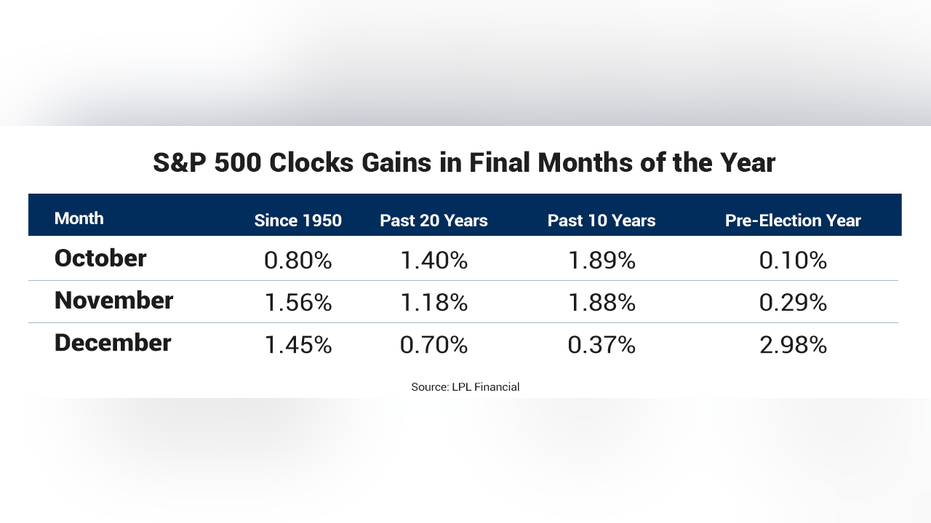Stock market's '10 most important days' of year start now
The U.S. stock market’s “10 most important days” of the year begin Tuesday.
That’s when active fund managers have a record bias towards growth stocks over value due to quarterly rebalancing and tax-loss selling, according to Bank of America Merrill Lynch’s Equity and Quant Strategy team.
“We have historically seen stronger returns from positioning alpha in the beginning of a calendar quarter, possibly fueled by the common practice of quarterly rebalancing,” New York-based BAML strategists Savita Subramanian and James Yeo wrote. Alpha is how well fund managers perform compared to their benchmark.
“But the first ten days of October have yielded the widest spread compared to other quarters: since 2008, the long-short strategy described above, with a holding period of 10 days, would have yielded an avg. return of 1.7ppt (or 53 percent annualized) - in October, compared to an average of just 0.1ppt (or 2.6 percent annualized) in the other months.”
It is often thought that October is a bad month for the stock market, but that hasn't been the case recently.
"October gets a bad rap for being a poor month, mainly due to incredible drops in 1929, 1987, and 2008. But over the past 20 years October is actually the third-best month of the year,” said Ryan Detrick, senior market strategist at LPL Financial.
In fact, Detrick's research shows the final three months of the year bode well for the S&P 500, generally.

And stocks are coming off a nice tailwind. The S&P 500 gained 19 percent through the first through three quarters of the year, booking its strongest three-quarter percentage gain since the second quarter of 2012, and Joe Quinlan, head of CIO market strategy for Merrill and Bank of America Private Bank, thinks the good times will roll into next year.
“Globally there’s a lot of reflationary efforts underway that sets the pace for the first quarter,” he told “Mornings with Maria.”
“Now that’s not just monetary policy, fiscal policy as well. So we’re buying the large-cap stocks here, the dividend payers, growers, and we're keeping an eye on Washington and the trade talks, but we see more upside heading into 2020.”
Quinlan says while he likes large caps, he actually prefers small caps because they’ve been beaten up. The small-cap-heavy Russell 2000 lost 2.5 percent during the third quarter and while it’s up 13.2 percent for the year, it’s lagging the S&P 500’s 0.6 percent gain for the quarter and 19 percent gain for the year.
However, Quinlan might want to wait until October ends before getting into the small caps. The Russell 2000 averages a decline of 1.08 percent during October, its worst monthly performance of any month, according to the Dow Jones Market Data Group.
CLICK HERE TO READ MORE ON FOX BUSINESS
“I think you want to get some exposure here, particularly on the cyclical side, because if you do believe the U.S. economy hangs in there, led by the consumer, good retail holiday season coming, China’s doing its part. Europe’s the drag, but everyone knows that but they sound like they’re getting their act together, and that’s a big if, but you want to buy the cyclicals here,” Quinlan said.




















